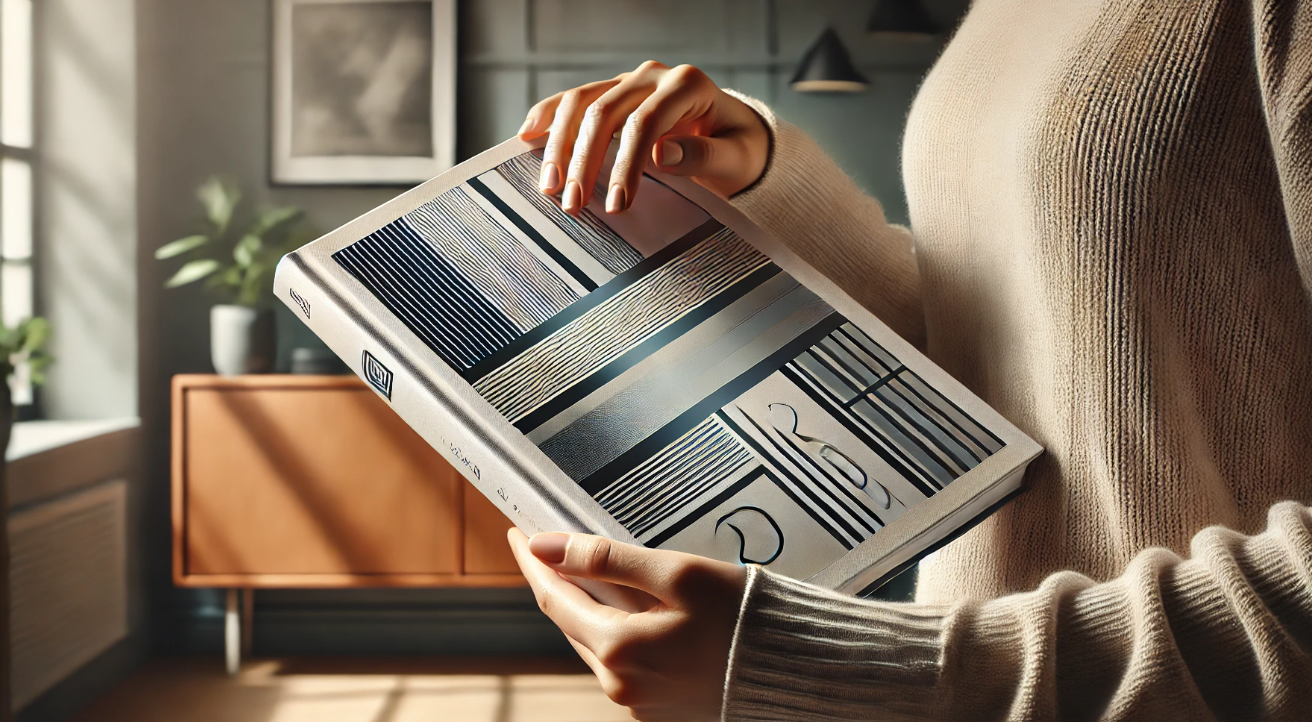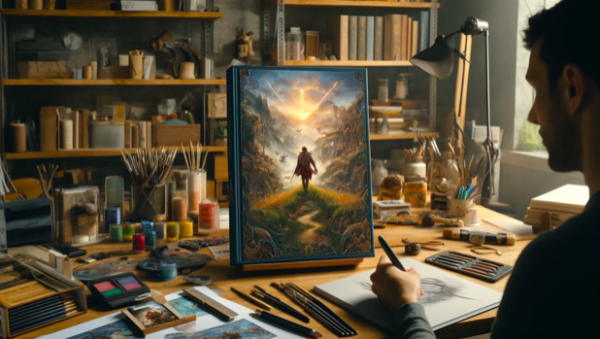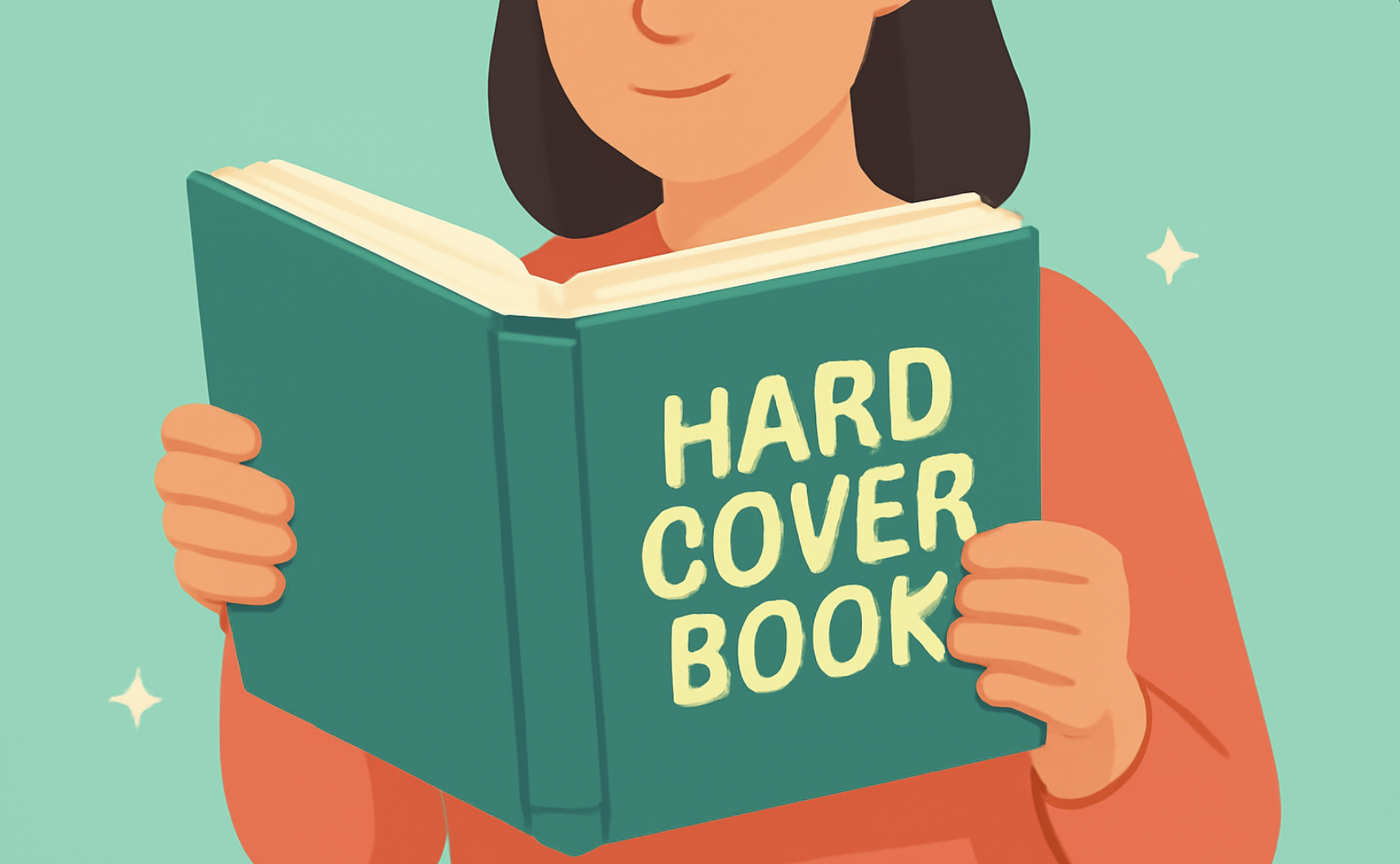They say not to judge a book by its cover, but let’s face it—everyone does. In a market overflowing with new releases, your book cover is your first and most powerful marketing tool. In fact, 79% of readers say a book’s cover influences their decision to buy it (The Book Smuggler). A striking, professional design not only reflects the story inside but also grabs attention on crowded shelves and online stores.
Luckily, creating a standout cover has never been easier. Spines, an innovative self-publishing platform, offers a powerful AI-driven book cover design tool that generates multiple cover options tailored to your genre. This tool analyzes your manuscript to create custom designs—including the front, back, and spine—giving you a professional look without the hefty price tag. Ready to turn heads? Let’s dive into 10 creative book cover design ideas that will make your book impossible to ignore!
1. Minimalist Magic: Less is More
Book cover designed by Spines: Tabitha Rose by Nikodeme Mentor
In a world full of visual noise, minimalist book covers cut through the clutter with simplicity and elegance. By focusing on clean lines, limited color palettes, and bold typography, minimalist designs create a powerful impact without overwhelming the reader. This style works exceptionally well for contemporary fiction, non-fiction, and memoirs where the focus is on delivering a strong, clear message.
Why It Works:
- Clarity: A simple design highlights the book’s title and author’s name, making it easy to recognize.
- Versatility: Minimalist covers look great in both print and ebook formats.
- Sophistication: Less is often more—minimalist designs can convey depth and emotion through subtle elements.
Design Tips:
- Use contrasting colors to make the text stand out.
- Focus on a single, striking image or shape.
- Keep fonts clean and bold to ensure readability.
2. Bold Typography That Commands Attention
Book cover designed by Spines: Living Life From Within by Katrina Johnson
Sometimes, the right words in the right style are all you need. Bold typography transforms your book cover into a statement piece, making the title itself the star of the show. This design approach is perfect for genres like contemporary fiction, memoirs, and self-help books where the message is powerful and direct.
Why It Works:
- Instant Impact: Large, eye-catching fonts immediately draw attention.
- Brand Recognition: Unique typography helps build a memorable visual identity.
- Versatility: Works across both print and ebook covers for maximum reach.
Design Tips:
- Experiment with custom fonts or hand-drawn lettering for a distinct look.
- Use contrasting colors between text and background for better readability.
- Incorporate subtle textures or gradients to add depth without clutter.
3. Hand-drawn Illustrations for a Personal Touch
Book cover designed by Spines: Anchored by Love by Marie-Claire Wright & David Saccoh Wright
There’s something undeniably charming about hand-drawn illustrations on a book cover. This design style offers a personal, artistic feel that instantly connects with readers. Whether it’s whimsical line art, intricate sketches, or vibrant illustrations, this approach adds warmth and authenticity to your book’s presentation.
Why It Works:
- Unique Style: Custom illustrations give your book a distinct style that sets it apart from mass-produced designs.
- Storytelling Power: Artwork can subtly hint at the story inside, sparking curiosity.
- Emotional Connection: Hand-drawn elements create a more intimate and inviting feel.
Design Tips:
- Match the illustration style with your book’s genre (e.g., whimsical for children’s books, detailed for fantasy).
- Use vivid colors or soft, muted tones depending on the mood of your story.
- Collaborate with talented designers or illustrators to bring your vision to life
4. Vibrant Colors to Catch the Eye
Summer Romance by Annabel Monaghan
Nothing grabs a reader’s attention faster than a burst of vibrant color. Bold, energetic hues can make your book cover leap off the shelf and stand out in online listings. Whether you’re writing contemporary fiction, young adult novels, or self-help books, a bright and colorful cover can reflect the energy and tone of your story.
Why It Works:
- Instant Visibility: Bright colors naturally attract the eye, making your book hard to ignore.
- Emotional Impact: Colors evoke emotions—reds convey passion, blues suggest calm, and yellows feel joyful.
- Memorability: A well-chosen color scheme creates a strong visual identity that readers remember.
Design Tips:
- Choose contrasting colors for the background and text to improve readability.
- Align your color palette with the book’s genre and tone.
- Use color blocking or gradients to add depth and interest.
5. Photographic Covers that Tell a Story
Book cover designed by Spines: I Got a Story To Tell by Joe Mirocke
A picture is worth a thousand words—and a powerful photograph on your book cover can instantly convey mood, genre, and story. High-quality, emotionally engaging images are perfect for memoirs, historical fiction, thrillers, and contemporary novels, where a single photo can hint at the narrative waiting inside.
Why It Works:
- Emotional Connection: Photography can evoke strong emotions and curiosity about the story.
- Professional Appeal: High-resolution images give your cover a polished, professional book cover design look.
- Genre Versatility: From moody landscapes to vibrant portraits, photos can suit almost any genre.
Design Tips:
- Choose images that reflect the book’s theme without giving too much away.
- Use filters or color grading to create a consistent mood.
- Make sure the photograph is high-resolution for both print and ebook covers.
6. Textured and 3D Elements for a Tactile Experience
Sometimes, it’s not just about how a book cover looks—it’s about how it feels. Incorporating textured and 3D design elements can make your book physically engaging and visually dynamic. Techniques like embossing, debossing, foil stamping, and spot UV coating add depth and sophistication, making your cover not only beautiful but also unforgettable.
Why It Works:
- Physical Engagement: Textures invite readers to touch and interact with the book, creating a lasting impression.
- Premium Appeal: Special finishes like foil or embossing give your book a professional and high-end look.
- Visual Depth: 3D effects and layered designs create depth, making your cover stand out on the shelf.
Design Tips:
- Use embossing or debossing to highlight the book’s title or key design elements.
- Apply foil stamping for metallic accents that catch the light.
- Ensure textures align with your book’s genre—luxury for romance, rugged textures for adventure.
7. Abstract Designs that Spark Curiosity
Is a River Alive by Robert Macfarlane
Abstract designs are perfect for creating a sense of mystery and intrigue. By using bold shapes, patterns, and unconventional layouts, abstract book covers invite readers to explore the deeper meaning behind the visuals. This design style works well for literary fiction, poetry, and genres that thrive on interpretation and imagination.
Why It Works:
- Intrigue and Mystery: Abstract imagery sparks curiosity, encouraging readers to pick up the book to learn more.
- Artistic Freedom: This style allows for creative expression without being tied to literal representations of the story.
- Timeless Appeal: Abstract designs often remain stylish and relevant over time, offering a distinct style that stands out.
Design Tips:
- Use geometric shapes, textures, and colors to evoke emotion and mood.
- Keep a balance between abstract elements and clear, readable typography.
- Let the abstract design subtly hint at the book’s theme without revealing too much.
8. Embracing Negative Space for Bold Impact
Book cover designed by Spines: Frost Bite by S. J. Anne
Negative space in book cover design uses the unoccupied areas to create a powerful visual impact, drawing the reader’s eye to the focal elements. This design style is excellent for mystery, thriller, and minimalist literature, as it often involves a clever interplay of background and imagery to suggest rather than reveal.
Why It Works:
- Visual Clarity: The use of negative space clears the clutter, making the cover easy to understand at a glance.
- Intrigue: It often leaves part of the image or title to the imagination, which can pique curiosity.
- Modern Appeal: Negative space is a hallmark of contemporary design, appealing to readers looking for fresh, clean aesthetics.
Design Tips:
- Focus on Balance: Ensure the text and imagery are well-balanced so that the negative space effectively highlights the main message.
- Contrast is Key: Utilize high contrast between the background and the text or image to make the elements pop against the empty space.
- Minimalist Typography: Choose bold, simple fonts that stand out against a spacious backdrop, enhancing readability and impact.
9. Genre-Specific Design for Instant Recognition
Book cover designed by Spines: Forbidden by Diamond Speaks
A successful book cover should immediately signal its genre to potential readers. Whether it’s the dark, moody tones of a thriller or the whimsical illustrations of a children’s book, aligning your cover design with genre expectations ensures your book appeals to the right audience. This approach is essential for grabbing the attention of genre fans browsing both print and ebook covers.
Why It Works:
- Instant Connection: Readers gravitate toward covers that match their preferred genres.
- Market Relevance: Genre-appropriate designs meet reader expectations and industry trends.
- Higher Visibility: Books with familiar genre cues are more likely to catch a reader’s eye in online stores or on shelves.
Design Tips:
- Research popular book covers in your genre for inspiration.
- Use typography, color schemes, and imagery that reflect genre conventions.
- Example: Science fiction covers often feature futuristic fonts and dark, cosmic imagery.
- Example: Romance novels typically use soft colors and elegant script fonts.
- Incorporate subtle genre hints in the front and back covers without being cliché.
10. Layered Collage for Depth and Complexity
You’ll Never Believe Me by Kari Ferrell
Layered collage book covers blend various images, textures, and typographic elements to create a rich, multi-dimensional visual experience. This artistic approach suits genres like historical fiction, biographies, and literary fiction, where the cover can reflect the complex layers of the narrative.
Why It Works:
- Visual Depth: The collage technique offers a tactile sense of depth, making the cover visually intriguing.
- Narrative Richness: Multiple elements can symbolize different aspects of the story, providing hints and teasers of the plot.
- Creative Freedom: This style allows for endless creativity, combining different eras, themes, or motifs relevant to the book’s content.
Design Tips:
- Curate Images Carefully: Select images that collectively convey the book’s theme. The choice of pictures should be harmonious yet evocative.
- Integrate Text with Images: Overlay text on the collage in a way that complements the visual narrative, using fonts that align with the era or mood of the story.
Spines’ AI-Powered Cover Design Tool: Revolutionizing Accessibility in Book Publishing
In the evolving landscape of book publishing, technology plays a pivotal role in democratizing access to professional design services. Spines stands at the forefront of this transformation with its AI-driven cover design tool, enabling authors to create stunning, genre-specific covers with ease.
How Spines’ Cover Design Tool Works
Spines’ intuitive platform allows authors to generate multiple cover options by simply describing their desired style. The AI analyzes these inputs to produce designs that resonate with the book’s theme and target audience. This seamless process eliminates the need for advanced technical skills, making professional cover design accessible to all.
The Impact of Technology on Cover Design Accessibility
Advancements in AI have significantly lowered the barriers to high-quality cover design:
- Cost Efficiency: Traditional cover design can be expensive, often deterring self-publishing authors. AI-powered tools reduce these costs, making professional design more affordable.
- Time Savings: Automated design processes expedite production, allowing authors to publish more quickly.
- Personalization: AI analyzes vast datasets to create personalized designs that align with current market trends and reader preferences.
(Nessgraphica)
Seamless Integration of Existing Cover Designs
For authors who have already crafted a cover, Spines offers the flexibility to incorporate existing designs into the publication process. Simply submit your cover, and Spines will ensure it is perfectly formatted and integrated, maintaining the integrity of your creative vision.
By harnessing the power of AI, Spines not only streamlines the cover design process but also ensures that every author, regardless of technical expertise, has the opportunity to present their work with a compelling and professional cover.
Bring Your Story to Life with a Stunning Cover
Your book cover is the first promise you make to your readers—it should captivate, inspire, and reflect the heart of your story. Whether you choose a bold typography design, a vibrant color palette, or a genre-specific style, investing in a high-quality cover is essential to stand out in today’s crowded market.
With Spines’ AI-powered cover design tool, creating a professional and eye-catching cover has never been easier or more accessible. Our advanced technology delivers multiple custom designs tailored to your genre and audience. Already have a cover? Simply send it to Spines, and we’ll seamlessly integrate it into your book’s layout for both print and ebook formats.
Ready to design a cover that sells your story?
👉 Sign up for a free Spines account today and explore our innovative tools to turn your book into a bestseller.
Let Spines help you create a cover that makes readers stop, look, and dive into your story!
FAQs – Book Cover Design Ideas
Q: How do I use Canva for book cover design?
Canva is a user-friendly graphic design tool that provides templates specifically for book covers. You can choose a template that suits your genre, upload images, and use drag-and-drop features to customize fonts, colors, and other design elements to create a professional-looking book cover.
Q: What size should a book cover be?
The size of a book cover depends on the publishing format. For most trade paperback books, the standard size is 6 inches by 9 inches. However, ebook covers are typically formatted as 1600 pixels by 2560 pixels, which fits most e-reader screens.
Q: How much does it cost to design a book cover?
The cost of designing a book cover can vary widely based on the designer’s experience and the complexity of the design. Freelance designers may charge anywhere from $100 to $500 for a custom cover, while professional design services or agencies might charge upwards of $1,000.
Q: What are the three parts of a book cover?
The three main parts of a book cover are the front cover, which includes the title, author’s name, and primary artwork; the spine, which displays the title and author’s name vertically; and the back cover, which often contains a synopsis, barcode, and publisher information.
Q: What makes a book cover stand out?
A book cover stands out through a compelling design that includes striking imagery or typography, a visually appealing color scheme, and clear, readable text. The best covers reflect the book’s genre and content, drawing the potential reader’s eye and sparking curiosity.
Q: What program can I use to create a book cover?
Adobe InDesign and Photoshop are professional tools favored for book cover design due to their extensive customization options and powerful editing capabilities. For those looking for a more accessible option, Canva offers a simple interface with plenty of book cover templates.
Q: How to make an eye-catching cover?
To create an eye-catching book cover, focus on bold, contrasting colors that pop, use dynamic and relevant imagery, and choose legible, striking fonts. The design should capture the essence of the book’s theme and appeal directly to its target audience.







